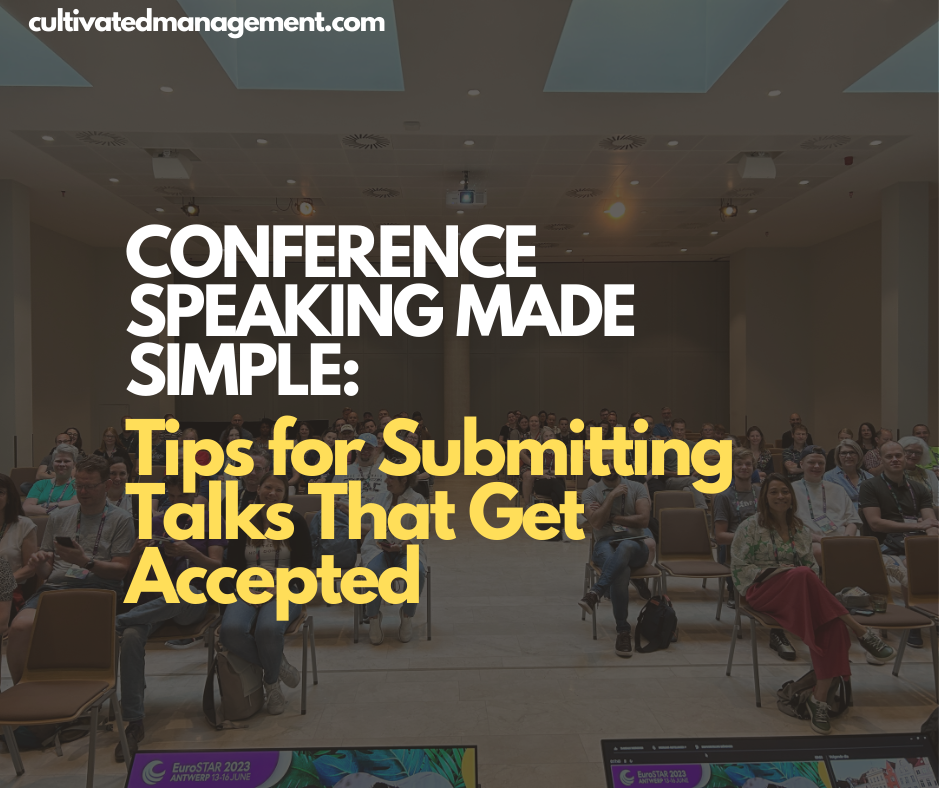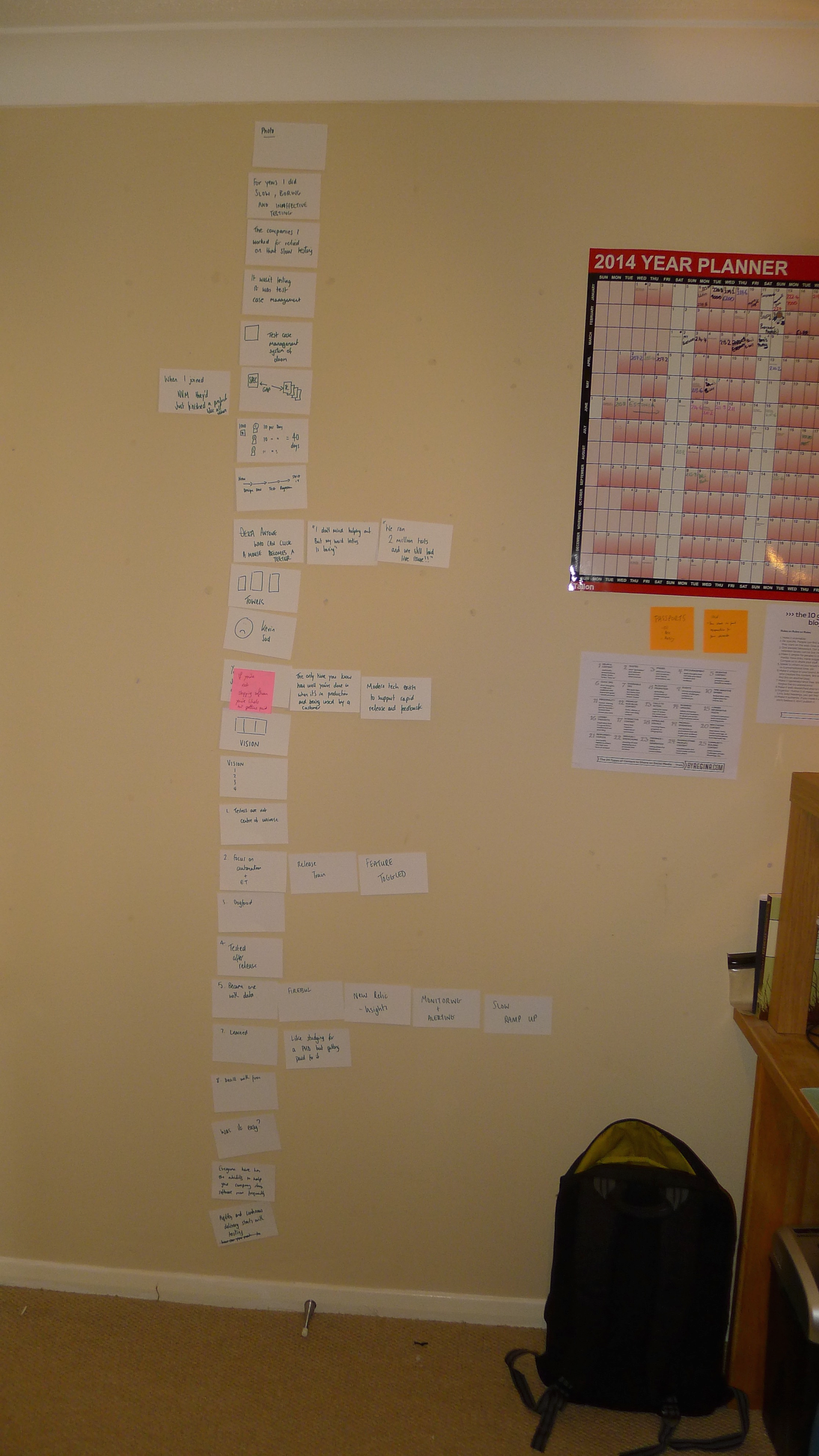
Zero To Keynote: How to Get Your Conference Talk Accepted
Getting your talk accepted is the first major hurdle in your speaking journey. Yet many aspiring speakers don’t put in the effort needed at this stage.
This guide explains why a strong submission matters and how to approach it like a pro.
A more in-depth version of this guide, along with everything else you need to know about conference speaking, is in the Zero To Keynote book.
My book Zero to Keynote is now out in print and digital. It’s a step-by-step guide to speaking at conferences—from sparking ideas and submitting proposals to crafting your talk, rehearsing, and delivering a presentation that stands out.
Why Speak at Conferences?
Speaking at conferences isn’t just about standing on stage—it offers growth in multiple ways:
- Push your limits: Speaking takes you out of your comfort zone, helping you grow.
- Boost self-confidence: Completing a talk builds confidence that spills over into work and life.
- Personal development: Public speaking is increasingly an essential workplace skill.
- Career advancement: Pitch, influence, and present with authority. Speaking opens doors.
- Share your ideas: Connect with your “tribe” who value your perspective.
- Access and exposure: Speaking often comes with free tickets, visibility, and brand promotion.
How to Find a Conference
Finding the right conference takes research. Start with:
- Industry journals, news, or newsletters
- Local meet-ups, user groups, or events
- Social media (follow hashtags and industry influencers)
- Blogs and thought leaders
- Word-of-mouth from peers or previous attendees
Key: Look for the Call For Papers (CFP)—the official invitation to submit a talk.
- Usually includes speaker info, abstract, and key takeaways
- Opens months to a year in advance
Understanding Conference Themes
Conference themes vary:
- Broad themes: Almost any topic can fit
- Niche themes: May require tailoring your idea
Themes help organisers brand the event and create a storyline connecting talks. Don’t worry if your talk isn’t a perfect match — there’s usually wiggle room. Large conferences often have tracks for narrower topics.
Generating Conference Topic Ideas
New speakers often think: “I have nothing new to say.” Remember: your perspective is unique – nobody has heard your perspective before.
Ways to generate topics:
- Reflect on your own experiences
- Share tools, techniques, or processes you use
- Highlight challenges or failures you’ve overcome
- Tell your personal journey
- Discuss industry frustrations or overlooked areas
Techniques for idea generation:
- Brainstorming, sketch noting, or outlining
- Use a mind map or post-it notes to visualise ideas
- Mash ideas together—creativity thrives on combinations
Tip: Start with an experience report—it’s safe, relatable, and unique. Many conferences also have newbie slots with smaller audiences.
Writing a Winning Conference Proposal
There are 10 essential steps:
- Read the CFP carefully
- Note deadlines, word/character counts, theme, and required attachments
- Check if a bio, photo, or supporting documents are needed
- Create a checklist of requirements - Get a free speaker checklist when you subscribe to the Meeting Notes newsletter.
- Schedule quiet time
- Draft in a document editor to avoid timeouts
- Save your submission for reference
- Define Purpose, Audience, Context (PAC)
- Purpose: Teach, inspire, inform, persuade, entertain
- Audience: Create a persona/avatar for your ideal attendee
- Context: Keynote, workshop, small talk, or venue type
- Outline your topic and flow
- Sketch the talk at a high level
- Focus on a single, clear message
- Write a problem statement
- What problem is your talk solving?
- Even experience reports solve challenges relevant to your audience
- Draft the middle at a high level
- Don’t worry about detailed slides yet
- Keep the proposal concise
- Define key takeaways
- Decide what attendees will gain: knowledge, motivation, perspective
- Most conferences request 3–4 takeaways
- Simplify repeatedly
- Remove anything that doesn’t add value
- Keep refining until only the core message remains
- Wait and revisit
- Step away for 24 hours; fresh perspective often improves clarity
- Submit and save a copy
- Attach a professional headshot and bio
- Keep a copy of your submission for future reference
Tip: Avoid casual photos; your headshot may appear on websites, flyers, and handouts.

Speaker’s Remorse
After submission, “speaker’s remorse” is common:
- Why did I do this?
- Can I really deliver this talk?
Reframe your thinking:
- You have time to practice
- You submitted for a reason — it matters
- It will be fun
- You will learn and grow
- The organisers liked your talk
Key Takeaways
- Effort at submission matters: A strong proposal increases your chances of acceptance.
- Focus on PAC: Purpose, Audience, Context are essential for clarity.
- Unique perspective: Even experience reports are valuable.
- Prepare and simplify: Keep proposals concise, clear, and compelling.
- Keep organised: Save submissions, photos, bios, and templates for future talks.
My book Zero to Keynote is now out in print and digital. It’s a step-by-step guide to speaking at conferences—from sparking ideas and submitting proposals to crafting your talk, rehearsing, and delivering a presentation that stands out.
Bibliography
Davies, G. (2010). The presentation coach : bare knuckle brilliance for every presenter. Chichester, England: Capstone Publishing Ltd (featured in my recommended reading list)
Duarte, N. (2008). Slide:ology : the art and science of creating great presentations. Beijing ; Sebastopol, Ca: O’reilly Media. (featured in my recommended reading list)
Garr Reynolds (2010). Presentation zen design : simple design principles and techniques to enhance your presentations. Berkeley, Calif.: New Riders, Cop. (featured in my recommended reading list)
Kawasaki, G. (2016). Guy Kawasaki. [online] Guy Kawasaki. Available at: https://guykawasaki.com/the_102030_rule/.
Lavenda, D. (2013). Once Upon A Time At The Office: 10 Storytelling Tips To Help You Be More Persuasive. [online] Fast Company. Available at: https://www.fastcompany.com/3015140/once-upon-a-time-at-the-office-10-storytelling-tips-to-help-you-be-more-persu.
Peters, K. (2010). How to Breathe When Public Speaking. [online] Dlugan.com. Available at: http://sixminutes.dlugan.com/vocal-variety-speech-breathing/.
Popova, M. (2012a). 10 Tips on Writing from David Ogilvy. [online] The Marginalian. Available at: https://www.themarginalian.org/2012/02/07/david-ogilvy-on-writing/ [Accessed 25 Jan. 2023].
Popova, M. (2012b). How to Give a Great Presentation: Timeless Advice from a Legendary Adman, 1981. [online] The Marginalian. Available at: https://www.themarginalian.org/index.php/2012/12/20/writing-that-works-roman/ [Accessed 25 Jan. 2023].
Port, M. (2015). Steal the show : from speeches to job interviews to deal-closing pitches, how to guarantee a standing ovation for all the performances in your life. Boston: Houghton Mifflin Harcourt. (featured in my recommended reading list)
Robinson, K. (2006). Do schools kill creativity? [online] Ted.com. Available at: https://www.ted.com/talks/sir_ken_robinson_do_schools_kill_creativity?language=en.
Young, S.H. (2007). 18 Tips for Killer Presentations. [online] Lifehack. Available at: https://www.lifehack.org/articles/communication/18-tips-for-killer-presentations.html.
